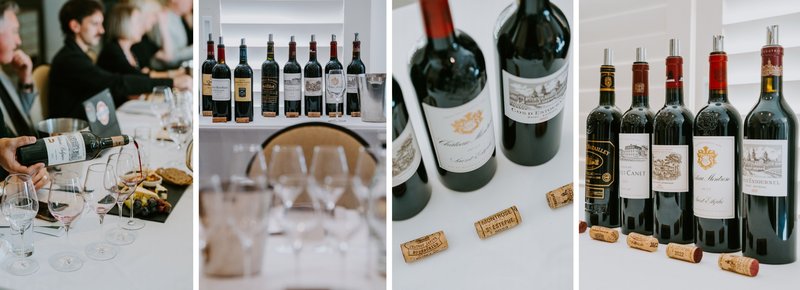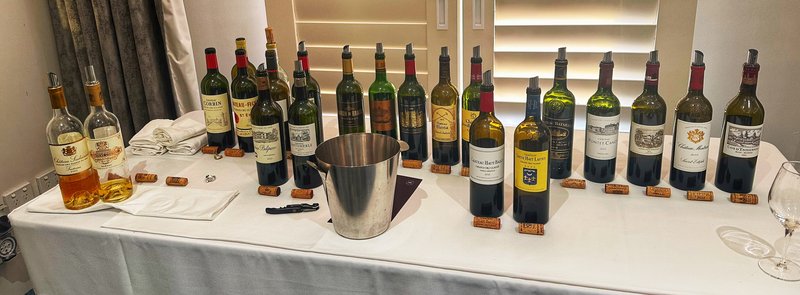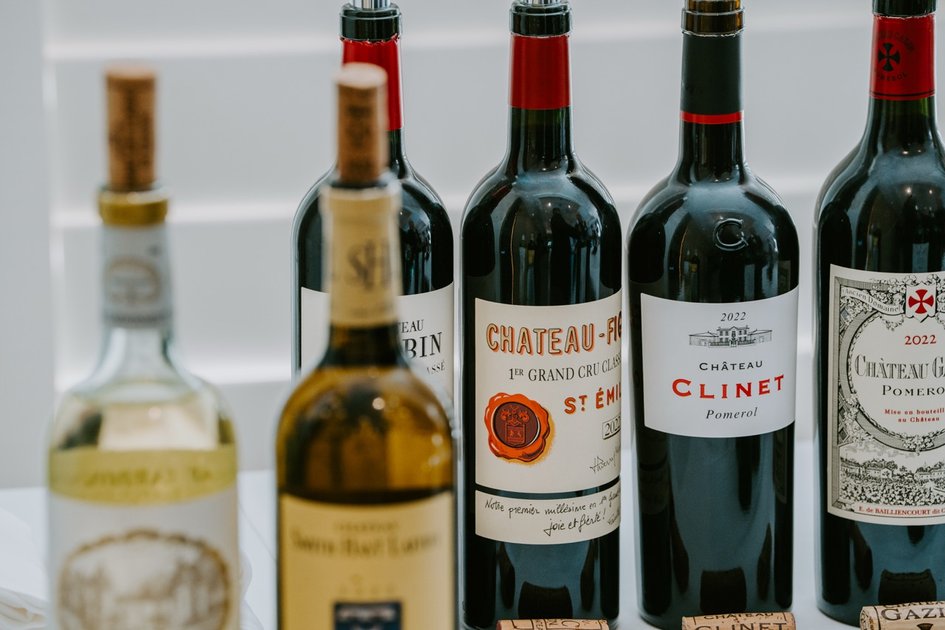A few weeks ago, Langtons Fine Wine welcomed the 2022 vintage of Bordeaux into Australia with an intimate media tasting spanning everything from great-value to first-growth.
In addition to showcasing the vintage, which despite its heat produced wines of exceptional freshness (but more on this later), the tasting shone a spotlight on Langtons’ strong belief in Bordeaux’s present and future potential in Australia.
This belief is backed by the sheer breadth of its 2022 allocation, which spans more than 160 wines and will be one of the largest and most comprehensive collections of Bordeaux to hit Australian shores.
As Langtons’ Head of Wine & Spirits Ramon Gunasekara puts it, “we’re about 46 per cent international wine business, and, out of that 46 per cent, about 70 per cent of that is French wine. Bordeaux and Burgundy is around 70 per cent of that … The level of importance Bordeaux is placed in our business is significantly higher.”
Guiding the lucky attendees through the tasting was Head of Auctions & Secondary Market Michael Anderson, whose passion for Bordeaux and French wine is palpable. In his view, one of the big opportunities that the region offers Australian trade is consistency.
“The reason that people blend wines is to iron out inconsistencies,” Michael Anderson tells Drinks Trade. “So, instead of using 50 per cent cabernet in a year where cabernet didn’t ripen properly, you can jack up the amount of merlot that you use.”
Comparing this to Burgundy, he says the difference is significant, hence providing retailers that may not be actively keeping track of vintage variation peace of mind.
“Because of the way they blend in Bordeaux you can find consistency year in, year out; particularly now with the younger generation of winemakers coming through. They work cleaner, they’re smarter in the vineyard, they’re smarter in the winery, less oak, all those sorts of things, so even in tough vintages (and this is a hot vintage 2022) the wines are excellent.”
Drinks Trade also asked why Australian retailers and distributors should be looking to French wine imports at a time where Australian wine is doing it tough.
Michael Anderson responds: “Wine and the wine trade is all about having as many different styles in front of you as you possibly can. The great wines of Bordeaux make Australia’s wines great as well. They should work in tandem as opposed to against each other. If you start with Australian shiraz and Australian cabernet, the natural progression will be to France to try those wines as well. I don’t think it should be a case of only buy one or only buy the other, I think you buy as much wine as you possibly can get your hands on if you’re interested and learn that way.”
This philosophy was, of course, reflected in the 22 wines from Bordeaux vintage 2022 in the tasting, which spanned 10 appellations from the right and left bank, and a mix of white, red and sweet wines. Highlight producers included Château Lafite Rothschild; Château Figeac; Château Pontet Canet; Château Cos d’Estournel; and Château Canon.
“2022 wasn’t a vintage where a high tide rose all boats; it wasn’t like that at all,” Michael Anderson said. “Only the great winemakers turned out really impressive wines.”

Some of the highlights from Langtons’ ’22 wines from vintage 2022′ Bordeaux tasting
The ‘new wave’ of Bordeaux
Explaining the vintage, which was shaped by unprecedented heat and drought along with episodes of frost and hail, Anderson says that, even though “the term ‘freshness’ [has been] thrown around a lot married in with ‘an excellent vintage’, it’s really important to understand that 2022 is so much more than that.”
He continues: “It was really, really hot, and historically in Bordeaux, when it is hot, you turn out high-alcohol, jammy wines that don’t last all that long in glass or bottle, so what we’re looking at is potentially the new wave of what Bordeaux looks like: a bunch of winemakers and viticulturalists who have changed their techniques and updated their techniques that even in a bad vintage or a hot vintage you can turn out really, really impressive wines.”
Langtons believes that this new-age of Bordeaux could help to ensure ongoing demand for both the region and the variety moving forwards, especially as “cabernet in Australia is down about 3.5 per cent or 4 per cent,” says Ramon Gunasekara.
Michael Anderson says this “new wave of wines shows that potentially, as it does warm up and climate change takes hold, that even in hot vintages where there’s 40 plus days of 30 degree heat, you can turn out really impressive wines. And I hope that’s the case, because cabernet as we know goes up and down with trends, so hopefully it can keep going on the up and up. The prices obviously are going up and up, so hopefully the quality’s there.”
Which wines should trade be focusing on?
While the tasting spanned a great deal of wines, it is perhaps the sub-$100 expressions that will be best suited to most retail settings in Australia. This includes Le Baron de Brane, the second wine of Margaux’s Château Brane-Cantenac, which retails for just $85 and delivered incredible elegance and finesse, along with the two wines from Haut-Médoc, Château Belgrave 5me cru classe and Château Cantemerle cantemerle, both $90 or under.
As Anderson puts it, “there’s still so much joy to be found in the second wines. We had a couple of second wines here today that were brilliant, so I think that if you’re willing to spend the money, you can find a lot of joy in these wines. Outside of the growth system as well, Cru Bourgeois makes some incredible wines – a lot of joy to be found there.”
Meanwhile, for operators of licensed venues, all 22 wines are strong contenders in their respective price points and offer great value to consumers searching for non-Australian wines to pair with their meals.
Again, when compared against Burgundy, the other French wine region responsible for most of Langtons’ non-Australian sales, the value of Bordeaux is clear. “Burgundy, you’re sort of looking at an entry point of $500 to find a good bottle of wine, but I think we saw here today that, even around the $80 mark, you can find incredible wines and a lot of joy. And wines that will age. You don’t have to rush into them just because they’re reasonably priced.”

The 22 Bordeaux wines on show during the tasting
Beyond Bordeaux: Anderson’s advice to retailers
As Australia’s leading destination for fine wine, Langtons’ portfolio is reflective of the diversity that makes up the global wine landscape. This is also evident in its business model, which, while championing the most valuable regions such as Bordeaux and Burgundy, is constantly expanding and looking to educate consumers around some of the other great wines of the world that aren’t yet as recognised in the Australian market.
One example is the Chilean cabernet icon Viñedo Chadwick which Ramon Gunesekara described in May as Langtons’ latest innovation: “Wine struggles with innovation, and one of the ways that we can help to innovate is by bringing new products into the market,” he told Drinks Trade. “We also have a responsibility to take our customers on a discovery journey, and from a Langtons perspective, we really specialise in luxury and ultra fine wines from all over the world.”
In a similar vein, Michael Andeson considers exploration to be one of the greatest and most important aspects of fine wine consumption. As he puts it, “wine is as much about history as it is about the wine.”
Anderson’s final advice to trade is this: “Try as much as you can. Open as many bottles. The way you sell wine is by opening bottles and putting them in people’s glasses. That’s why these tastings are so great, because for people like yourself to come and try St-Julien next to Pauillac, it’s important because you can compare and contrast because they are different regions within regions.”
//
Langtons looks to break $157k record as ‘auction market begins to warm’
Langtons’ Head Buyer is calling Viñedo Chadwick its latest innovation. Why?


Dining and Cooking